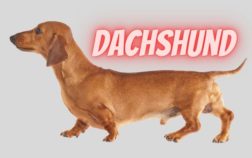Have you ever wondered if Dachshunds have webbed feet? Well, you’re in luck because we’re here to settle the debate once and for all. While Dachshunds might not be the first breed that comes to mind when you think of dogs with webbed feet, there is actually some truth to this claim. Although not all Dachshunds have webbed feet, some of them do possess a slight webbing between their toes. In this article, we’ll explore the reasons behind this unique trait and its potential benefits for these lovable and feisty little dogs. So, let’s get ready to uncover the secrets behind Dachshunds and their webbed feet!
Anatomy of Dachshund Feet
Paw Structure
Dachshunds have unique feet that contribute to their distinctive appearance and abilities. Their paws are characterized by compact size and strong, well-arched toes. The structure of their feet allows them to navigate different terrains with agility and balance.
Presence of Webbing
Contrary to popular belief, dachshunds do not actually have webbed feet. Webbing refers to the presence of skin membrane between the toes, similar to what we see in ducks or some other dog breeds. Dachshunds, however, lack this feature.
Function of Webbed Feet in Dogs
Enhanced Swimming Abilities
Webbed feet in dogs, such as those found in Labrador Retrievers or Newfoundland dogs, have evolved to enhance their swimming abilities. The webbing provides a larger surface area to push through water and aids in propulsion. This adaptation is particularly useful for water retrieving or working breeds.

Better Traction and Balance on Slippery Surfaces
Webbed feet can also provide better traction and balance on slippery surfaces. The webbing acts as a natural grip, enhancing a dog’s ability to maneuver on wet or icy terrain. By spreading out their weight across a wider surface area, webbed feet help prevent accidents caused by slips and falls.
Debunking the Myth of Dachshunds Having Webbed Feet
Lack of Scientific Evidence
Despite the widespread belief that dachshunds have webbed feet, there is a lack of scientific evidence to support this claim. Extensive studies have been conducted on various dog breeds, including dachshunds, but none have found any substantial presence of webbing in their feet.
Confusion with Other Dog Breeds
The myth of dachshunds having webbed feet may have originated from confusion with other dog breeds that do possess this trait. It is important to note that there are many different types of webbed feet, and not all webbing appears the same. This confusion could have led to the misconception about dachshunds.
Variations within Dachshund Breed
It’s also worth noting that not all dachshunds are the same. The breed exhibits significant variations in physical characteristics, including their feet. Some dachshunds may have slightly more skin between their toes, which can be mistaken for webbing. However, these variations are likely not true webbing and should not be confused as such.

Possible Origins of the Webbed Feet Belief
Historical Influences
The belief that dachshunds have webbed feet may have stemmed from historical influences. Dachshunds were originally bred in Germany for hunting purposes, particularly for pursuing and flushing out burrow-dwelling animals like badgers. It is possible that early breeders may have made inaccurate claims about their dogs having webbed feet to emphasize their swimming and digging abilities.
Inaccurate Information Spread
In today’s age of rapid information sharing, misconceptions and myths can easily spread. It’s possible that the notion of dachshunds having webbed feet originated from a simple misunderstanding or misinterpretation, and then gained traction through word of mouth or online discussions. It is crucial to critically evaluate and verify information before accepting it as fact.
Other Traits and Adaptations of Dachshunds
Long and Low Body
While dachshunds may not have webbed feet, they possess other distinctive traits that contribute to their overall functionality. Their long and low body shape is specifically designed for efficient burrowing and maneuvering through tight spaces. This unique body structure allows them to access underground dens and navigate rough terrain with ease.
Powerful Forelimbs and Chest Muscles
Dachshunds have powerful forelimbs and well-developed chest muscles, which further enhance their ability to dig and navigate difficult terrain. These adaptations are essential for their original purpose as hunting dogs, as they need the strength to dig into burrows and the endurance to keep up with their quarry.
Keen Sense of Smell
Another remarkable trait of dachshunds is their exceptional sense of smell. Their long noses and well-developed olfactory system make them excellent trackers and scent-detection dogs. This keen sense of smell is particularly valuable in hunting and search-and-rescue operations, where their ability to locate and follow scents is unparalleled.
Discussion on Webbing in Dachshund Puppies
Temporary Webbing in Puppies
Although adult dachshunds do not possess webbed feet, it is worth noting that dachshund puppies may exhibit temporary webbing between their toes. This temporary feature is a normal part of their early development and typically disappears as they grow older. It is crucial not to mistake this temporary webbing in puppies for true webbed feet in adult dachshunds.
Normal Development and Growth
As dachshund puppies mature, their feet and toes go through a process of normal development and growth. The skin between their toes becomes less pronounced, allowing the individual toes to have more separation and movement. This natural progression in foot development aligns with the breed’s overall anatomical characteristics.
Pros and Cons of Webbed Feet in Dogs
Advantages in Specific Environments
Webbed feet provide distinct advantages for dogs in certain environments, such as water-retrieving or working breeds that frequently engage in water activities. The added propulsion and better grip on slippery surfaces can greatly assist these dogs in performing their tasks effectively and safely.
Potential Disadvantages
While webbed feet can be advantageous for specific activities, they may have some potential drawbacks in other situations. The additional tissue between the toes could make it more challenging for some dogs to walk or run on dry land, resulting in reduced speed or agility. These disadvantages, however, do not apply to dachshunds as they lack webbed feet.
Variability in Webbed Feet Functionality
It is important to note that even among dog breeds with webbed feet, the functionality of the webbing can vary. The effectiveness of webbed feet in providing traction, balance, and swimming abilities may differ from one individual to another. This variability reinforces that webbed feet alone do not determine a dog’s overall capabilities.
Tips for Caring for Dachshund Feet
Regular Nail Trimming
Proper foot care is essential for the overall well-being and comfort of dachshunds. Regular nail trimming is crucial to prevent overgrowth and potential issues such as ingrown nails. It is recommended to trim your dachshund’s nails every few weeks or as needed, taking care not to cut too close to the quick.
Moisturizing Paw Pads
The paw pads of dachshunds can become dry or cracked, especially in harsh weather conditions. To ensure their comfort, it is beneficial to moisturize their paw pads regularly using pet-safe paw balm or moisturizers. This helps to keep the pads supple and protects against potential discomfort or injury.
Exercise and Conditioning
Dachshunds, like any other breed, require regular exercise to maintain overall health and prevent weight gain. Engaging in activities that stimulate their natural instincts, such as supervised digging or playing fetch, can contribute to their physical and mental well-being. However, it’s important not to overexert dachshunds, as their long, low bodies are prone to certain spine-related issues.
Recognizing Foot Conditions in Dachshunds
Common Paw Problems
Dachshunds, like any other dogs, can experience common paw problems that may require attention. These problems include cracked or bleeding paw pads, torn nails, foreign objects stuck between the toes, or even blisters from excessive friction. It’s important for owners to regularly inspect their dachshund’s paws for any signs of discomfort or injury.
Signs and Symptoms to Look For
If your dachshund displays signs of discomfort or limps while walking, it is crucial to examine their feet for any issues. Look for redness, swelling, cuts, or wounds on the paw pads or between the toes. Additionally, pay attention to their behavior during walks or play to identify any abnormal gait or hesitance, which could indicate foot-related problems.
Conclusion
Understanding the anatomy and characteristics of dachshund feet is important for debunking the myth of webbed feet in this breed. While dachshunds do not possess true webbing, their feet are uniquely adapted for their burrowing and tracking capabilities. It is crucial to recognize and appreciate the distinct traits and adaptations that make dachshunds such remarkable dogs. By providing proper care and attention to their feet, we can ensure that dachshunds maintain their overall well-being and enjoy their active lifestyles.




